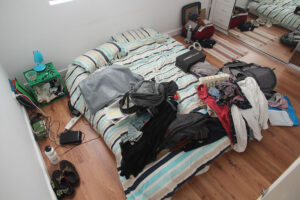Best Price Moving and Storage: Compare Affordable Solutions
June 3, 2024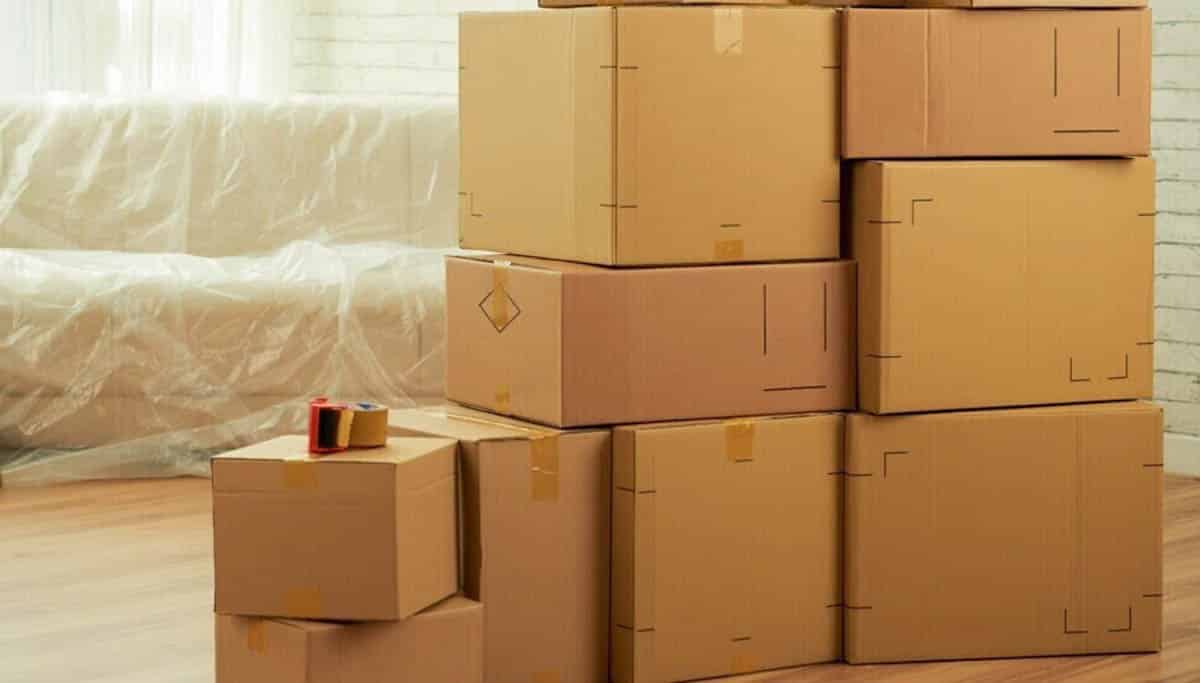
Are you planning to move to a new place? get free quotes from the best price moving and storage companies here and don’t worry about the hassles of packing and transporting your belongings.
At first moving to a new location can be stressful, especially if you are doing it for the first time or on a tight budget. The good news is that with the best price moving and storage solutions we show you, you can make your relocation hassle-free and affordable.
In this article, we will discuss everything you need to know about the best price moving and storage solutions we suggest, including their benefits, how to choose the right service provider, and tips for a successful move. Let’s get started with an outline of the article.
Moving to a new place can be expensive, but with these moving and storage solutions, you can save a lot of money without compromising on the quality of services. These solutions offer a range of benefits, including:
Best price moving and storage solutions are designed to fit your budget. They offer competitive rates for their services and help you save money on your relocation.
With these best price moving and storage solutions, you can choose from a range of options depending on your needs and budget. You can opt for a full-service move, partial move, or just the transport of your belongings.
Qualified moving and storage companies provide you with professional assistance throughout the relocation process. From packing to loading and unloading, they ensure that your belongings are handled with care and transported safely to your new location.
The process of moving to a new place can be time-consuming, but by hiring a qualified company, you can save a lot of time and effort. They take care of all the logistics of your move, allowing you to focus on other important things.
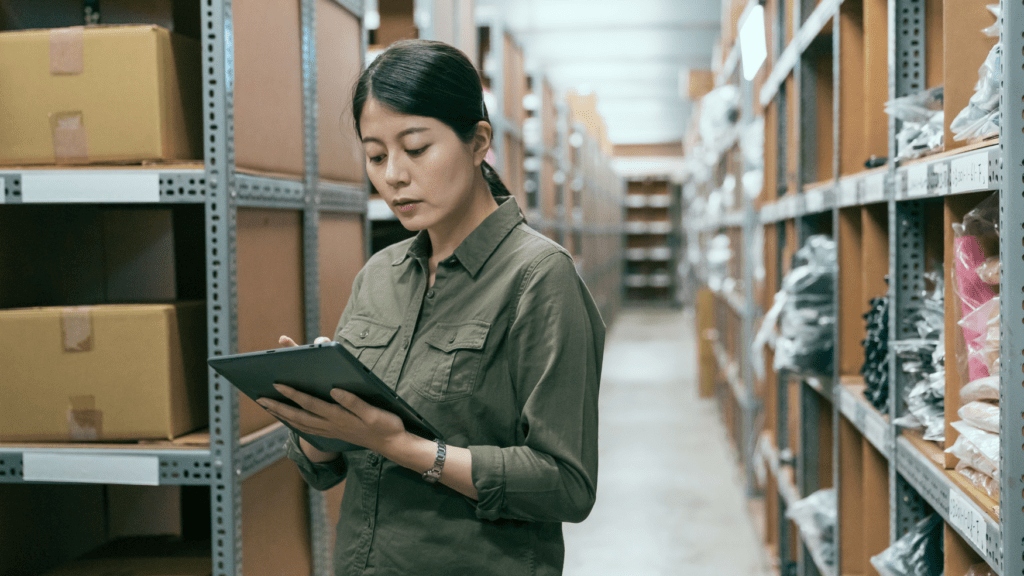
Also Read: Maximizing Business Efficiency with Business Storage Units
Choosing the right best price moving and storage solutions provider is crucial for a successful and hassle-free move. Here are some tips to help you choose the best price moving and storage provider:
Research and compare different service providers in your area to find the one that best fits your needs and budget. Check their website, read reviews, and ask for referrals from friends and family. Get Free Quotes Here.
Make sure that the service provider you choose is licensed and insured. Basically, this will protect you from any liability in case of accidents or damages during the move, we ensure that all providers we suggest you are properly licensed in your state.
Read reviews and testimonials from previous customers to get an idea of the quality of services offered by the service provider. Look for reviews or ask people that have used the company you want to hire.
Also get a written estimate from the service provider before finalizing the deal, because this will help you avoid any hidden fees or charges that may be added later.
Ask the service provider for referrals from previous customers. This will help you get an idea of their reliability and professionalism.
Start planning your move. Moving to a new place can be stressful, but with these tips, you can make your move successful and hassle-free.
Check here best price moving and storage companies in your are.
Moving to a new home or office can be an exciting adventure, but it often comes with its fair share of challenges and stress. From packing up belongings to coordinating logistics, the moving process can be overwhelming without the right support. Companies like U-Haul are here to provide you with reliable solutions and expert guidance on your moving process. In this guide, we’ll explore how U-Haul’s comprehensive moving services expertise can help you navigate your moving process with ease.
U-Haul has earned its reputation as a trusted leader in the moving and storage industry. Founded in 1945 by Leonard Shoen with just a handful of trailers, U-Haul has since grown into a global powerhouse, offering a wide range of services and products to meet the diverse needs of customers around the world. Whether you’re moving across town or across the country, U-Haul provides the tools, equipment, and support you need to make your move a success.
U-Haul offers a comprehensive range of moving solutions to accommodate a variety of needs and preferences. From truck and trailer rentals to moving supplies and storage options, U-Haul has everything you need to streamline your move from start to finish. They have the resources and expertise to ensure a smooth and stress-free moving experience.
When planning your move, it’s essential to choose the right services to meet your specific needs and preferences. Consider factors such as budget, timeline, and level of assistance needed when selecting the services that are right for you.
Once you’ve chosen your moving services, it’s time to start preparing for the big day. Begin by decluttering and organizing your belongings, packing them securely, and labeling boxes for easy identification.
On moving day, follow your plan carefully and enlist the help of friends, family, or professional movers to assist with heavy lifting and logistics. Use U-Haul’s reliable trucks and equipment to transport your belongings safely and efficiently to ensure that everything goes according to plan.
Despite careful planning, unexpected challenges may arise during the moving process. From inclement weather to logistical issues, it’s essential to remain flexible and adaptable in the face of adversity. Lean on U-Haul for support and guidance, and don’t hesitate to reach out for assistance if needed.
Moving doesn’t have to be stressful – with the right support and resources, you can navigate the process with ease and confidence. You can enjoy a seamless and hassle-free moving process with U-Haul from start to finish.
A sensible alternative is to rent a storage unit if you’re running out of room in your home or office. Here are some instructions to ensure that you get the correct storage unit and that the features you are looking for are offered by the storage facility.
You might still have an idea of what they are if you’ve never rented a storage unit before. The storage units at their base are enclosed spaces for storing your belongings in a clean, dry environment. But in terms of customer care, cleanliness, and security measures, you will be shocked at the broad chasm between facilities. While the price is always a factor, in comparison to having your things stolen or damaged, saving a few dollars each month will pale.
If you’ve determined that a storage unit is a good idea, determining the size is the next step. Although your initial storage may be things that just won’t fit into the garage or basement, consider other items that may be better kept in your storage unit that reside in your house. Stuff like decorations for holidays that are used only at a certain time of year. In addition, products such as lawn furniture and equipment for the yard.
Furthermore, you may not only want to decide what you want to store today, but you should try to predict what needs to be stored down the road. Will you be downsizing any time soon, for example? You may have additional furniture and other things that you want to hold, but you won’t have room for them.
Both the location of the storage facility itself as well as the location of the unit at the facility when we say location. You may be tempted to rent from a storage company that is nearest to your current home with regard to the location of the facility. While convenient, the facility can not have the characteristics you really want. A better plan is to expand the diameter of your quest to include facilities within half an hour of your house. The truth is, every day, week, or even month, you will most likely not be visiting your moving storage unit. You can also find one that provides better facilities at a lower price by expanding your search.
When you identify the location of the storage facility, find out where you want your unit to be in the facility. If the unit should be indoor or outdoor is the first decision. One that is housed inside the storage unit building is an indoor unit. They are accessible through an indoor corridor and are situated on the first, second, or even third levels, with elevator access to the upper floors.
The benefits of indoor units are that they are easier to enter, and your belongings would be safer from the weather as well as preserved year-round at a reasonably uniform temperature. The drawbacks are that loading and unloading objects, especially large items such as furniture, may be more difficult for you. Your hours of access may also be slightly more limited.
Outdoor units are those which are normally reached by driving up to them. The profit is the ease of loading and unloading directly into them. Outdoor unit sizes can also be larger than indoor units. These modules, however, are not quite as cozy as their counterparts indoors. And in the rain, snow, or other weather problems, you might find yourself having to move objects.
If you felt there was a risk your things would be stolen, you wouldn’t rent a storage unit, right? Well, with cut-rate storage firms, this occurs all too frequently. Identifying businesses that use the new security measures is what you want to do.
Do they feature the whole facility’s security system, indoors and out? Ask questions about how long the video is stored and how it is recorded.
Find out what kind of access system they use, as well. Ideally, you’ll want a facility that provides access to either fingerprint sensors or custom pin-code. These types of entry systems allow exactly who enters and exits and when to be monitored by the storage facility. Some facilities also have units that are individually notified for added protection.
Inspect the facility’s perimeter fencing. Does it go all over the floor? Is there any harm that might make access possible?
Finally, what kind of locks are located on the storage units themselves? Usually, there are three kinds of locks you’ll find on storage units. The typical padlock comes first. These can be quickly cut using bolt cutters while being inexpensive. Next, there are locks for discs.
These are similar to padlocks, but feature smaller, more difficult to cut, angled shackles. Then you’ve got cylinder locks, similar to the deadbolt lock used on the front door of your house. This is the most safe lock available, mostly because bolt cutters can not be used to cut it. The best advice is to check for a storage facility providing this kind of lock.
Most storage facilities sold only unheated storage units in the olden days of the storage industry. These units were also not usually insulated, meaning that your belongings were exposed to temperature and humidity extremes, which could be very dangerous to objects such as appliances, antiques and other items, depending on what you kept.
There are several higher-end installations today that provide either heated storage units or climate-controlled units. During the winter months, heated units hold the temperature up. They are also usually insulated so that within the unit, temperatures will not get too high during the summer months. Climate-controlled units are those that are year-round, thermostatically regulated to a constant temperature. This is the way to go if you have fragile objects.
Units that are made of steel are another thing to look for. Wood framing and drywall storage units absorb humidity and odor. These will enter your belongings finally, degrading them.
In reality, the best way to decide what you really get is to go to the facility you’re thinking about and ask to be shown around. There will be competent, friendly workers in a good storage company who will be more than happy to give you a full tour and answer all your questions. That can be a fair indicator of the type of service you are likely to get after you have rented, if you get a staff member who appears disinterested or irritated with questions you ask.
Ask to see the actual storage unit that you will rent or at least one on or in the same location on the same floor. This way, you will begin to imagine what it would be like to move your things in and out and be able to measure the necessary effort.
Ask other questions, such as what access and office hours are, whether the units are regularly monitored for water leakage, and what kind of pest control they use. Believe it or not, rodents have a major issue with certain storage facilities. In one of these, you certainly don’t want to store your valuables.
Check the storage facility feedback that you’re considering. Make sure to do it, whether you do it first or last. Read not just the feedback on the company’s website, but the Yelp and Google reviews. You’ll be able to get a better picture of what clients think of the facility by reading feedback on various pages.
Many storage facilities demand that you keep insurance in your unit for the contents. To see if your homeowners or renter’s insurance covers your goods in storage, you’ll want to check with our insurance provider. If not, via the storage business itself, storage insurance would almost invariably be available.
The benefits of using the insurance of the storage company are that it is usually very inexpensive, often covers rodent damage and transit items, and often comes with no deductible, while if you make a claim with the insurance of your homeowner, you will first have to pay your deductible and then run the risk of upping or cancelling your insurance.
Determine what the leasing policy of the company is. Do they sell month-to-month no-deposit leases or last month’s rent? Are you liable for the whole month if you quit in the middle of the month? A good facility would allow you, without a long lease agreement, to rent from month to month. If you leave mid-month, if proper notice has been issued, you will not be charged for a full month’s rental.
Know when payments are due, about the late payment policy of the company, and the methods of payment. In order to make paying your bill quick, some storage companies offer direct pay options as well as online bill pay.
Storing your belongings has come a long way in a storage facility. With so many storage choices out there, to ensure you get the storage you want and need, it’s important to do your homework.
Related Articles :
Making the decision to use PODS can give you greater freedom while moving from one house to another. But how much do PODS cost, and how do they stack up against the competition?
Because your possessions will be more easily accessible, moving with PODS might be incredibly convenient. They might also be less expensive than renting from a storage facility.
Having a PODS will be quite beneficial when selling a property and finishing your relocation, whether it is your free moving boxes or other items you need to access.
Let’s look at the price of a pod and some other useful details regarding renting a storage container.
A number of variables will affect how much your PODS will cost. Just two things to think about are the size of the containers you require and the distance they will need to travel. You should expect to pay between $200 and $800 for a local move.
You should expect to pay between $400 to $7,500 for PODS if you’re moving to a new state. Naturally, the price rises if you require more containers and storage for a longer period of time.
A month’s worth of storage and moving costs are included in the pricing. However, you will also need to account for the cost of labor and packing supplies if necessary.
There might be some better local options if you need to keep your belongings for a longer period of time, whether it’s for a move or for another reason.
Renting a nearby storage facility might result in lower costs, particularly if the business is new and still attempting to establish itself. If you need long-term storage, a nearby storage facility might be a better choice since you won’t have to pay extra moving fees multiple times. You might want to think about using a premium storage facility with 24-hour access if you have irregular hours of work.
Local moving companies may also provide storage for your belongings in a warehouse. Although access to your items will be more restricted, you may anticipate that storage fees will be a little higher than at typical storage facilities.
There are three container sizes available: 7’, 12’, and 16’, though the costs don’t really differ that much between them. Depending on your area, prices may also vary slightly, but as a general rule, 7’ costs $164.99 each month, 12’ costs $189.99 for the first month, and 16’ costs $199.99. All-size containers will cost $164.99 for extra months.
Your container will cost slightly under $100 for both delivery and pickup. They charge $89.99 to move the POD to a new site. Depending on the type of coverage you require, insurance might cost as little as $10 per month or as much as $450.
When it comes to price, PODS outperforms its rivals. With comparable rates for local movements being offered by all the main moving container storage providers.
The costs are obviously higher for cross-country relocation, and the price gap varies significantly between organizations. While PODS’ prices aren’t considerably higher than those of its rivals, you should still seek quotes from each business to be sure you’re receiving the best bargain.
You should prepare to pay significantly more for an interstate move than for a local one. Due to the numerous variables involved in long-distance removals, the PODS website does not provide fast quotes. To find out the precise cost of this service, you must call them.
For a one-bedroom home, interstate fees will start around $2,000; however, they will go to $4,000 for longer distances. If your home has two or three bedrooms, you should budget between $3,000 and $5,000. Expect costs for a 4- or 5-bedroom home to range from $5,500 to around $8,000.
The price of moving with POD is comparable to that of their rivals. Get as many quotations as you can and don’t be afraid to barter for a lower price if you want to get the best offer. Your overall moving costs will be cheaper if you can schedule your relocation during a less busy season.
Always ask a lot of questions before renting from a firm that provides mobile storage containers. Before continuing, consider the following wise portable storage queries and receive the right replies.
I hope you’ve found my POD rental guide to be helpful.
You’ve just bought your dream home. Now’s the time to add some personal touches to make it your own, like painting the interior walls and installing new flooring. Most people complete these home renovations right when they get a new home.
Also, Read: Benefits of Moving to Another State in 2022
Why not get started before you move in? An empty house means your furniture won’t be in danger of spilled paint or other damage — plus you or your contractors can take advantage of open space. And most importantly, you and your family can limit exposure to renovation dust and odors that can be hazardous to your health.
So, as tempting as it is to move in right away, try tackling these three home improvement projects before the moving trucks show up.
1. Kitchen and Bathroom Remodeling
Remodeling the kitchen is a priority for many homeowners when moving into a new home. There are many simple ways of personalizing and revitalizing outdated looks, like adding new appliances, countertops and vanities, changing out fixtures and hardware, or replacing or refacing the cabinets.
But if you’re going to install new or refaced cabinets and you’re going to finish them on site, make health a priority. The formaldehyde used in cabinet glues will be released into your home (what’s known as “off-gassing”) for a long time, so choose cabinets labeled NAUF (No Added Urea Formaldehyde)
During finishing, contractors and homeowners should properly ventilate the house and wear a respirator
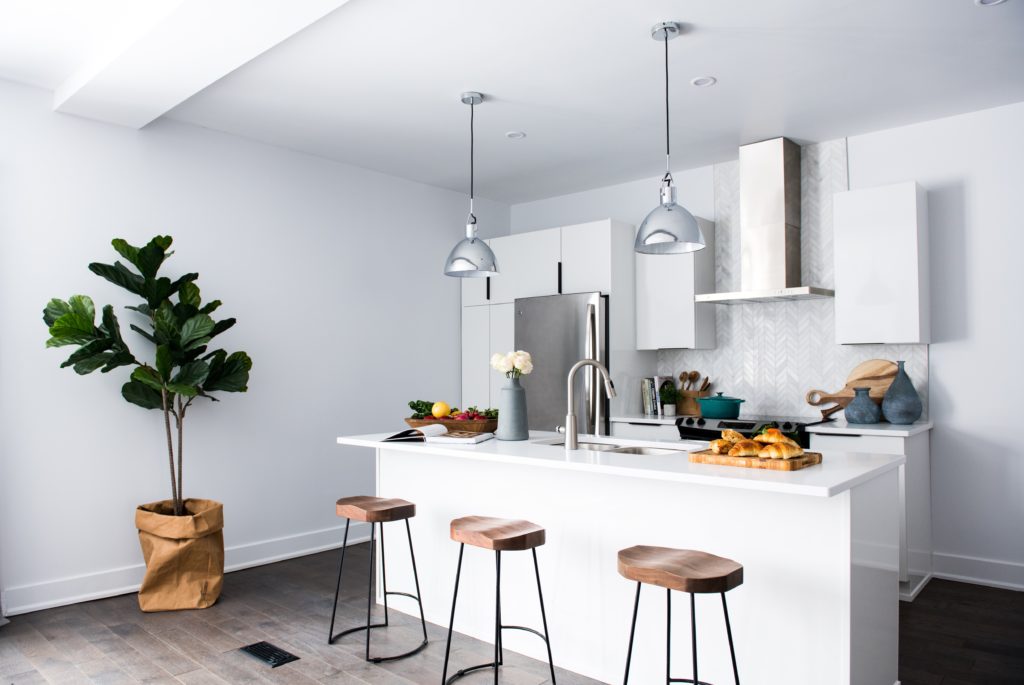
2. Painting The Walls
Changing the color of the rooms in your home is a simple project that can personalize your home for little cost. But take precautions, Unless you use low- or no-VOC (Volatile Organic Compounds) paints, you are polluting the indoor air with volatile organic chemicals — such as benzene or formaldehyde — that you really don’t want to breathe in. Low- or no-VOC paints are available in many colors and price points, so making them a priority is easy
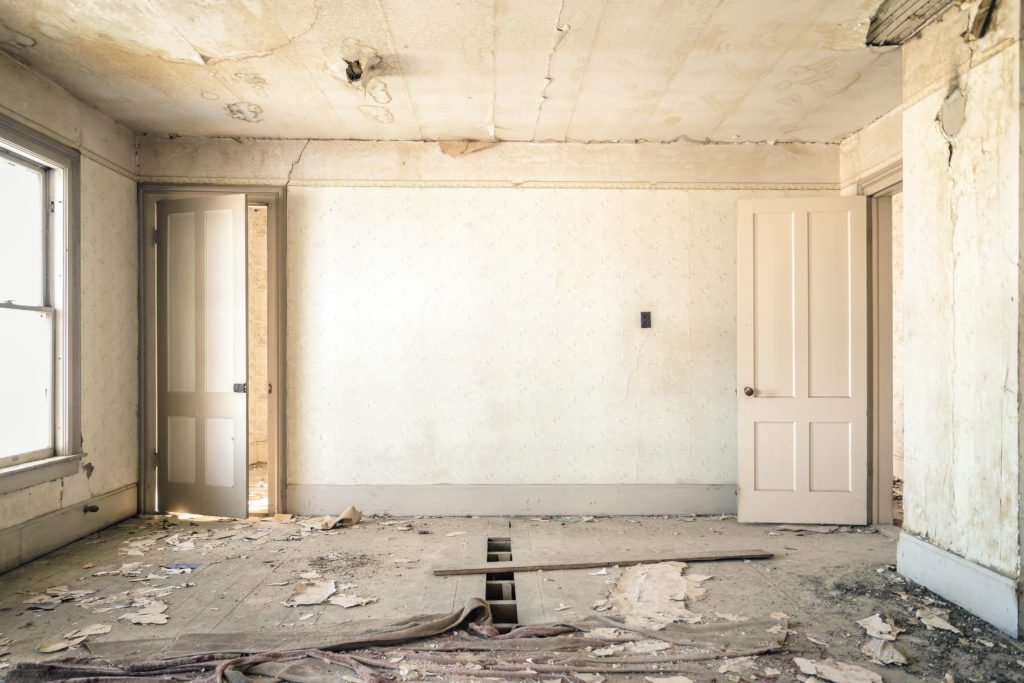
3. Flooring Installation & Refinishing
In a new-to-you home, you might be lucky enough to find something salvageable underneath that old carpeting. But in many cases, the floor will need to be refinished. If you do it yourself, take precautions when prepping, sanding and applying the new finish. Open all the windows and put up barriers to contain dirt and debris for easy cleanup.
Note that a water-based finishing system will produce significantly less smog than an oil-based system, which will off-gas for six months to a year, A water-based system, on the other hand, may off-gas for only 48 hours.
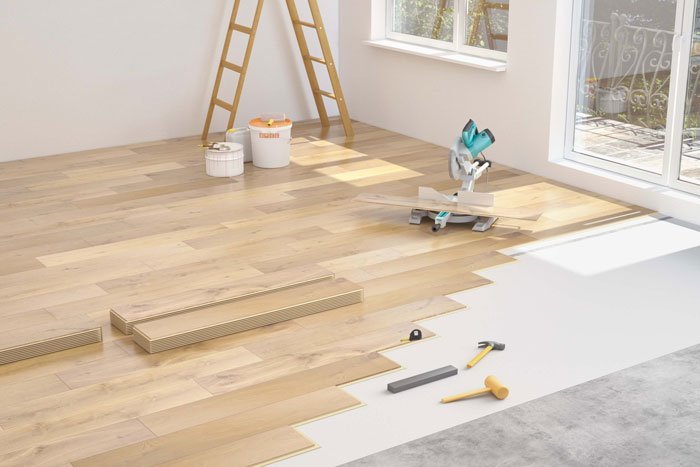
If you opt for installing a new carpet, be aware that it actually gives off a lot of fumes. It’s one of the big nasties when it comes to off-gassing, Look for wool as opposed to synthetics and a floor underlayment with low VOCs(Volatile Organic Compounds). If the house already has carpet, be sure to get it professionally cleaned (you don’t even want to think about the dead skin cells and mites that might be lurking within).
Moving can be stressful enough — make it less complicated by getting some of your home improvement projects out of the way before all the boxes and furniture get in the way.
How to Lighten Your Load Before Moving? Nobody wants to go through the hardship of relocating. Long to-do lists, an ostensibly unattainable deadline, and a slew of complications may all wreak havoc on your sense of calm and quiet. However, if you’ve decided to downsize a bit before hiring a local moving company or long-distance movers, you might want to look at this as an opportunity. There’s no better time to go through your items and only save the things you can’t live without in your new home. Before you relocate, read on for some helpful hints on how to decrease your burden.
Going through your belongings and determining which ones to discard takes time. And by the time you start packing your boxes, there’s usually no time to think about which of your belongings are coming with you and which are staying behind. That’s why it’s critical to schedule decluttering time well ahead of your move’s start date. Set aside a few hours here and there in the weeks leading up to your move, and remember to account for the time it takes to donate, sell, or dispose of the goods you don’t want.
Moving Tip: Garage Sale Helps you Lighten up your Load
Do you want to get rid of 50% of your wardrobe? Or finally, get rid of everything that’s taking up space in your garage? Whatever you want to do, make sure you have a clear objective in mind and a reward in mind to help you stay focused. Even more importantly, you must have a dependable strategy that you can rely on in order to avoid becoming overwhelmed. Create a space where you can sort things into piles: keep, donate, recycle, and trash. Remove the items you won’t keep from your area as soon as possible so they don’t serve as a stressful visual reminder.
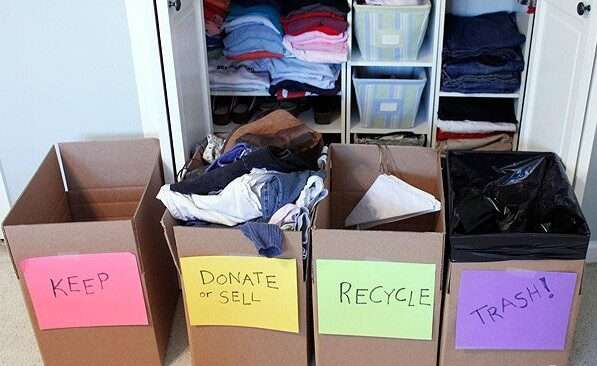
We’re often hesitant to let go of our belongings because we’re afraid we’ll need them again and be sorry we let them go. Choosing short-term storage is a fantastic approach to put that notion to the test. You may forget you own your belongings after they’ve been placed out of sight for a long time, and you’ve already moved on emotionally from them. Storage can also assist you in removing objects from your environment that you’ve already determined you desire, allowing you to focus more readily on your downsizing efforts. As part of their moving services, many businesses provide storage.
Keep the things that make you happy. Another tried-and-true method is to think about whether you’ve used an item in the last 90 days or plan to use it in the next 90 days. If you don’t, you probably won’t miss it and should get rid of it. If 90 days seems too short, feel free to extend it to a year or whatever length of time feels most comfortable to you.
Though decluttering may appear to be a difficult task, it does not have to be. While you’re working, put on some music. Invite a friend to assist you. Make an evening of it by watching a movie in the background or cracking a drink. Take frequent pauses and stop when you’re feeling overwhelmed or fatigued.
Related Articles:

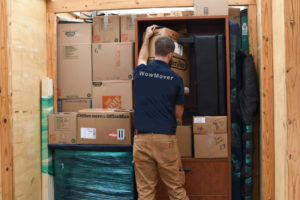


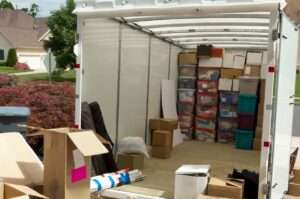

After assessing the cost of a move, it’s also important to consider the service that comes with a particular moving, storage container, or DIY moving storage solution. Although DIY storage containers delivered to your driveway are typically less expensive than hiring a full-service moving company, you may end up spending more money in the long run when factors like convenience, stress, time and potential damage to sentimental furniture and other belongings are taken into account.
One of the biggest disadvantages of DIY relocating is that you have to perform all of the work! Aside from the aches and pains that an unskilled person may face hauling boxes and heavy furniture on moving day, there are many hours spent packing, loading, coordinating delivery dates, and unloading that a professional full-service moving company can help you to save time and money.
Wowmover moving service can help and plan your upcoming move, provide same-day packing, loading, and delivery options depending on where you want to go, and do so at prices that are often only a few hundred dollars cheaper than the DIY storage container option when compared to the full service moving option. On moving day, our movers enter your home, protect the walls and floors with protective materials, pack all of your belongings into professional corrugated moving containers, pad wrap all of your furniture, crate fragile items with custom moving crates, and meticulously load each one of your belongings as if it were their own.
Useful Topics:
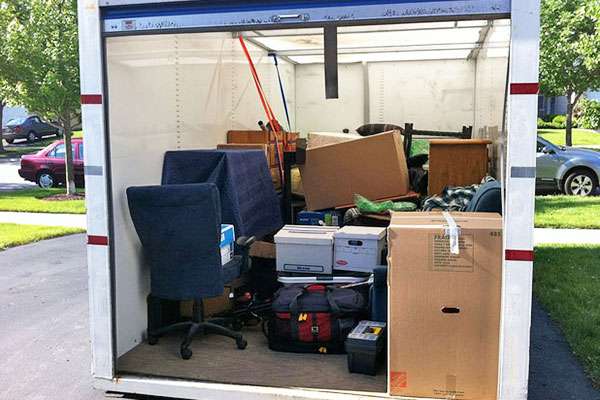
We begin delivery arrangements after our moving crew has loaded everything you’ve requested onto the moving trucks. If you want transit storage, we can accommodate you at one of our numerous warehouses around the United States. With the DIY storage container moving, your service starts and finishes with the container’s pick-up and delivery. We consider factors like move-in dates, truck accessibility at destination, unloading, and unpacking, dunnage disposal, and, of course, if something goes wrong with your furniture while in travel, we assume full responsibility for any damages deemed our fault, giving you moving insurance and peace of mind.
One benefit of DIY storage container moving options is the inexpensive cost of the container. The actual moving and all the stress of planning a move, packing, and getting moved in and out by specific dates, which a full service moving company provides, can make all the difference in deciding whether to save a few dollars and move or spend a few extra dollars and know your move will be handled professionally and without issue from the start.
Give us a call if you’re planning to move soon. Year after year, we assist family after family with their relocation. We can also relocate you
Related Articles:






Moving to a new home is an exciting yet daunting task. Once the hustle and bustle of the interstate move is over, it’s time to settle in and make your new house feel like home. Unpacking and organizing can be overwhelming, but with a well-thought-out plan and some strategic steps, you can turn chaos into order effortlessly. In this guide, we’ll explore practical tips and tricks on how to organize your new home post-move, ensuring a smooth transition and a comfortable living space for you and your family.
Moving is a process that requires careful planning. Before the moving day, create a timeline outlining the tasks you need to accomplish. This can include tasks such as packing, hiring a moving company, notifying utility services, and researching the new neighborhood. By breaking down the tasks into manageable chunks, you can stay organized and reduce the stress associated with moving.
When packing your belongings, label each box according to its contents and the room it belongs to. This makes it easier to identify what’s inside without having to open every box. Additionally, pack essential items separately and keep them handy for the first few days in your new home.
Start unpacking room by room. Begin with the essentials, such as kitchen items, toiletries, and bedding. As you unpack, prioritize the items you use daily. Avoid rushing through the process; take your time to organize each room thoughtfully.
Consider the layout of your new home and decide on the placement of furniture accordingly. Visualize the flow of each room and arrange furniture to optimize space and enhance functionality. Don’t hesitate to experiment with different arrangements until you find what works best for your lifestyle.
Invest in storage solutions that maximize space utilization. Utilize vertical space with shelves and cabinets. You can also consider multifunctional furniture pieces that offer storage options, such as ottomans with hidden compartments or bed frames with drawers.
Adding personal touches to your new home can make it feel warm and inviting. Decorate with items that hold sentimental value or bring you joy. Hang artwork, display family photos, and incorporate decorative elements that reflect your style and personality.
Settle into your new home by establishing daily routines. Familiarize yourself with the local area, find nearby grocery stores, schools, and healthcare facilities. Creating a sense of routine can help you adapt to your new surroundings more quickly.
Maintaining an organized home requires regular cleaning and decluttering. Make it a habit to clean up after yourself and encourage your family members to do the same. Regularly assess your belongings and donate or discard items you no longer need.
In today’s digital age, organizing your home extends to your online life as well. Keep your digital files, emails, and online accounts well-organized. Use cloud storage solutions to store important documents and create folders to categorize your digital files efficiently.
Moving to a new home is undoubtedly a significant life event, and organizing your space effectively can make the transition smoother and more enjoyable. By planning ahead, packing and unpacking strategically, designing your space efficiently, personalizing your new home, and maintaining an organized lifestyle, you can create a comfortable and harmonious living environment for you and your family.
Remember, the key to a successful move lies in being prepared and staying organized throughout the process. With the right mindset and these practical tips, you can turn your new house into a home that truly reflects your personality and style.
For more expert advice on moving and organizing your new home, visit WowMover today!
Moving is always a hectic process that requires careful planning. While professional moving companies can transport most household items, there are certain restricted items they cannot legally accept due to safety regulations or the risk of damage. Let’s look at some of the most common materials that are prohibited on moving trucks.
Hazardous materials including flammable, explosive or corrosive substances present serious risks if not properly contained and require special permits. Consequently, movers cannot transport:
It’s always safest to have gas grill tanks and fuel drained professionally before moving. Ammunition should travel securely stored in your personal vehicle.
Items that are ultravaluable, fragile or perishable are best kept with owners in their vehicle rather than on a moving truck. Prohibited items include:
While movers have insurance, such valuables are best protected when transported by the owner present. Pets should travel in personal vehicles when possible for comfort and safety.
While beds, couches and dressers present no problem, certain major appliances require advance disconnection and securing that most moving companies don’t offer. These include:
It’s prudent to hire separate certified specialists to disconnect, prepare and reload such appliances professionally on site.
While TVs and compact audio/visual items aren’t an issue, moving certain electronics demands technical skill and precautions movers may not have. Some prohibited examples:
Consult with electronics professionals on safe packing, transportation and reinstallation of sensitive equipment to prevent damage or malfunctions.
Unless disassembled properly, large assembled furniture poses logistical challenges. Prohibited items include:
Book a separate service through the movers or local craftsmen to safely dismantle oversized intact furniture for reassembly at destination.
A few other less obvious restricted materials are:
Common sense dictates double checking all items to make sure nothing dangerous, excessively heavy or difficult to handle safely on a moving truck is included without proper preparation and transportation planning. With properly restricted items, the move goes much smoother!
So what should you do with prohibited materials when moving? Here are some options:
With careful assessment and planning, all household contents can still make the journey to the new home with a little creative logistics. Don’t wait until moving day to address restricted substances – prepare well in advance.
Damage can still occur even with the utmost care. It’s wise to ensure prohibited valuables are sufficiently covered:
Knowing liability in advance eliminates surprises and assures adequate protection for precious restricted cargo during transit. Planning is key for a smooth move.
In conclusion, communicating with moving companies beforehand allows safe handling of all but the most hazardous or difficult to transport items. With the proper preparations and precautions discussed, even prohibited belongings can still make the journey to the new home intact. A little extra effort upfront eases stress down the road. Safe travels!
Your departure date is approaching, but you still have no idea what to pack for a move abroad. If you’ve just traveled inside your country’s boundaries, you should know that relocating abroad is more complicated and time-consuming than even a long-distance move. You’re getting ready to pack your belongings and travel to a different part of the country. But how do you get ready for such a life-changing event?
Also, Read: Get Paid to Move to Another Country
You’re thinking about things like “How should I pack for an international move?” and “How should I pack for an international move?” What do you need when relocating to another country? What is the best way to transport my belongings to another country? and so forth.
Fortunately, we’re here to answer all of your questions and assist you in deciding what to carry, making packing a breeze. Let’s get started.
Packing can be a bit of a jumble. You should collect the boxes and moving supplies, figure out the most efficient way to bundle all of your belongings, cancel your cable, and so on. It’s easy to forget something during such a hectic time, and it’s usually something important, which can make the whole process even more stressful.
You may want to consider hiring professionals packing service to pack your belongings for you to prevent any extra stress and pressure. Another crucial step is to make a list of the most important things and pack them first in your suitcase. The following items should be included on that list, among others.
Without all of the requisite travel documents, you can’t even begin planning your overseas move, let alone move into your new home. As a result, double-check your documents before moving on to clothing, shoes, and other products, such as:
In addition to medical records, you can bring some medications with you just in case. Naturally, you don’t want to need medical attention during your foreign relocation or immediately after arriving in your new home. Even so, you should be prepared for the worst-case scenario, so bring some drugs in case you catch a cold or get a headache. If you take medicine on a regular basis, carry at least two months’ worth in case you can’t find it in your new country.
If you’re having trouble deciding what to bring to your new home, consider the following factors to help you decide:
The issue of shipping may be critical here, as there might be limitations depending on whether you want to move internationally by air or internationally by sea. There may also be limitations imposed by your chosen government. Don’t forget to think about these things as well.
You’re about to embark on a journey to another part of the globe. It’s easier to get the job done with less things to worry about even when traveling a short distance, let alone when planning an international move.
We understand that you have a few favorite cosmetics that you want to bring with you to your new country in case you can’t find them there. That, however, is not a good idea. These things take up a lot of space, which you’ll need for more important items. Furthermore, since most toiletries are temperature-sensitive, they are likely to spoil throughout your journey.
When you move abroad, only the things that are absolutely necessary or have unique significance for you can find a home in your suitcases. These include family heirlooms or any other object of sentimental value, in addition to those things you need on a regular basis for personal hygiene.
Clothing and shoes should be brought in sufficient quantities for the first few weeks or months. You’ll be able to buy everything you need once you’ve settled in and explored the city. Why would you carry so many clothes to a distant location when you can buy anything you need there? You’d probably be able to find even better labels and choose your favorites there.
The golden rule when relocating overseas is to leave anything you haven’t used in over a year behind. Yes, you can hire moving storage and containers, and leave some of your belongings there, but that doesn’t mean you can bring anything with you to your new place. The more things you have, the more costly your foreign transfer will be, and the more time it will take to plan the move. So, keep things easy and spend your valuable time with your friends and family rather than coping with your belongings.
When you’re getting ready to move abroad, you’ve got a lot on your plate, so do whatever you can to make packing as easy as possible. Concentrate on the essentials, such as your travel papers, and ignore everything you can substitute until you arrive at your new address. You should be able to enjoy your journey to your new home, so don’t let your preparations detract from the overall experience.
Related Articles:


